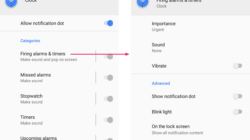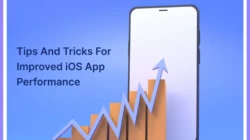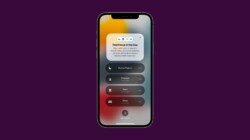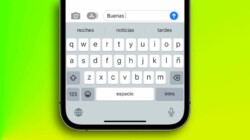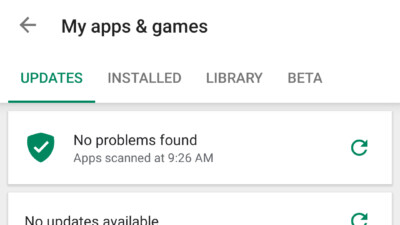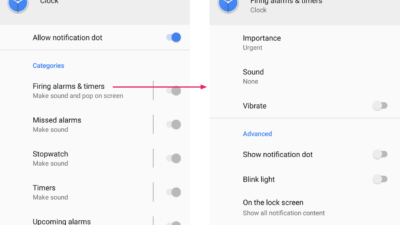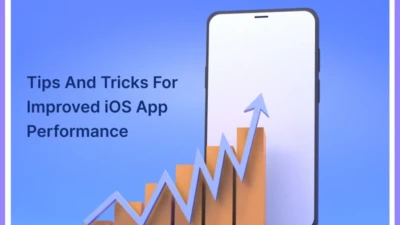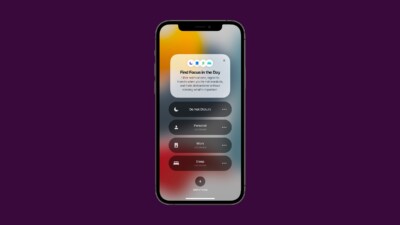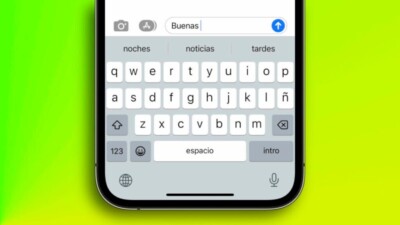Android 14 new features overview – Embark on an in-depth exploration of Android 14’s latest features, meticulously crafted to elevate your mobile experience to unprecedented heights. From seamless multitasking to enhanced privacy, discover a world of innovations that redefine the boundaries of your smartphone’s capabilities.
With each new feature meticulously detailed, this comprehensive overview delves into the intricacies of Android 14, unveiling its transformative impact on your daily interactions and unlocking a realm of possibilities.
App Cloner
Introducing the game-changing App Cloner feature in Android 14, designed to revolutionize your app usage experience.
With App Cloner, you can effortlessly create multiple instances of your favorite apps, unlocking a realm of possibilities.
Benefits
- Separate work and personal accounts: Clone messaging or social media apps to keep your professional and private communications distinct.
- Run multiple game instances: Create separate clones for your favorite games, allowing you to progress in multiple accounts simultaneously.
- Test app updates: Clone apps to safely test updates before applying them to your main installation, ensuring seamless transitions.
Impact on App Development and Usage
App Cloner has far-reaching implications for app developers and users alike.
- Developers can now design apps with enhanced support for multiple instances, catering to the diverse needs of their users.
- Users gain unprecedented control over their app usage, unlocking new levels of customization and efficiency.
Bluetooth LE Audio

Bluetooth LE Audio, the latest Bluetooth standard, brings numerous enhancements and advantages to audio streaming and wireless connectivity.Bluetooth LE Audio introduces a new audio codec called LC3, which stands for Low Complexity Communications Codec. LC3 offers significantly improved audio quality compared to previous Bluetooth codecs, especially at low bitrates.
It provides a wider dynamic range, clearer sound, and reduced latency, enhancing the overall listening experience.
Multiple Audio Streams
Bluetooth LE Audio allows multiple audio streams to be transmitted simultaneously to different devices. This feature enables users to share audio with multiple speakers or headphones, creating a more immersive and dynamic audio experience. It also supports broadcast audio, allowing users to tune into public audio streams in shared spaces like airports or shopping malls.
Auracast
Auracast is a new feature in Bluetooth LE Audio that enables devices to broadcast audio to multiple receivers without the need for pairing. This feature is particularly useful in public spaces, such as museums or retail stores, where users can receive audio information or entertainment without having to connect to a specific device.
Improved Power Efficiency
Bluetooth LE Audio is designed to be more power-efficient than previous Bluetooth versions. The LC3 codec and other optimizations reduce the power consumption of audio streaming, extending the battery life of devices.
Enhanced Device Connectivity
Bluetooth LE Audio introduces new features that improve device connectivity and reliability. Isochronous channels provide a dedicated and reliable connection for audio streaming, reducing the risk of dropouts and ensuring a smooth and uninterrupted audio experience.Overall, Bluetooth LE Audio offers a range of improvements and advantages that enhance the audio streaming experience, increase device connectivity, and improve power efficiency.
It is a significant upgrade that will benefit users and device manufacturers alike.
Conversation Widgets
Conversation Widgets are a revolutionary feature in Android 14 that empowers users to streamline their communication experience. These widgets reside on the home screen, providing instant access to ongoing conversations and enabling seamless interactions.Conversation Widgets offer an array of benefits, including:
-
- -*Streamlined communication
With Conversation Widgets, users can quickly access and respond to messages without having to open the messaging app. This eliminates the need for constant app switching, saving time and reducing distractions.
- -*Streamlined communication
-*Personalized interactions
Conversation Widgets can be customized to display conversations with specific contacts or groups, allowing users to prioritize their most important interactions. Additionally, widgets can be resized and placed anywhere on the home screen, ensuring they are always within easy reach.
-*Improved accessibility
Conversation Widgets enhance accessibility for users with disabilities. By providing a visual representation of ongoing conversations, users with impaired vision or motor skills can more easily engage in communication.
Conversation Widgets are poised to transform the messaging landscape, offering significant benefits for both users and app developers.
Key Features and Benefits
| Feature | Benefit |
|---|---|
| Instant access to conversations | Eliminates app switching and saves time |
| Customization options | Personalized interactions and improved accessibility |
| Visual representation of conversations | Enhanced accessibility for users with disabilities |
| Increased engagement | Users are more likely to respond to messages promptly |
| Improved customer satisfaction | Businesses can provide better support and communication channels |
Implementation
Implementing a Conversation Widget involves creating a widget provider class that extends the AppWidgetProvider class. The provider class should define the layout of the widget and handle interactions, such as message sending and receiving.
Future Enhancements
Future iterations of Conversation Widgets could incorporate additional features, such as:
-
- -*Rich media support
Allow users to send and receive images, videos, and other rich media content within widgets.
- -*Rich media support
-*Smart replies
Provide suggested replies to messages, further streamlining communication.
-*Conversation grouping
Group related conversations into folders or categories for better organization and management.
Provide a specific example of how cross-device copy and paste can enhance productivity in a real-world scenario.: Android 14 New Features Overview

Cross-device copy and paste can significantly enhance productivity in a variety of real-world scenarios. For instance, consider a student who is researching a topic on their laptop. They find a relevant article on a website and want to incorporate a specific quote into their notes.
With cross-device copy and paste, they can simply highlight the quote on their laptop, copy it, and then paste it directly into their notes document on their tablet. This eliminates the need to manually retype the quote, saving time and reducing the risk of errors.
Benefits of Cross-Device Copy and Paste
- Saves time by eliminating the need to manually retype content between devices.
- Reduces the risk of errors by ensuring that content is copied and pasted accurately.
- Improves collaboration by allowing team members to easily share content between different devices.
- Enhances productivity by streamlining workflows and reducing the need for manual data entry.
Font Scaling
Android 14 empowers users with comprehensive font scaling options, catering to diverse visual needs and preferences. This feature allows users to adjust font sizes across the entire system, enhancing accessibility and readability for all.
Benefits for Accessibility
Individuals with visual impairments often struggle with small or unclear text. Improved font scaling in Android 14 addresses this challenge, enabling users to enlarge text to a comfortable size for better readability. This enhances their overall user experience, allowing them to engage with their devices more effectively.
Font Scaling Options
Android 14 offers a range of font scaling options to suit individual preferences. Users can choose from small, medium, large, and extra-large font sizes. Additionally, they can fine-tune the scaling to their exact liking using a slider. This flexibility ensures that every user can find the optimal font size for their needs.
Interaction with Other Accessibility Features
Font scaling in Android 14 seamlessly integrates with other accessibility features. Users can combine it with text-to-speech to have text read aloud, or with screen magnifier to further enlarge specific areas of the screen. This synergy of accessibility features creates a highly customizable and inclusive user experience.
Material You theming
Material You theming is a powerful and flexible theming engine that allows users to personalize their Android devices with custom color palettes and themes. It is based on the principles of Material Design, which emphasizes simplicity, usability, and visual appeal.
Material You theming offers a wide range of customization options, including the ability to choose from a variety of pre-defined color palettes or create your own custom palette. Users can also customize the look and feel of their devices by changing the font, wallpaper, and icon shapes.
Material You theming has a significant impact on the overall user experience. It can make devices more visually appealing, easier to use, and more engaging. For example, users can choose a color palette that matches their personality or mood, or they can create a custom theme that is tailored to their specific needs.
Key features and benefits of Material You theming
- Allows users to personalize their devices with custom color palettes and themes
- Based on the principles of Material Design, which emphasizes simplicity, usability, and visual appeal
- Offers a wide range of customization options, including the ability to choose from a variety of pre-defined color palettes or create your own custom palette
- Can make devices more visually appealing, easier to use, and more engaging
Best practices for using Material You theming effectively in app design
- Use color palettes that are consistent with your brand identity
- Choose fonts that are easy to read and visually appealing
- Use icon shapes that are consistent with the overall design of your app
- Test your app on a variety of devices to ensure that it looks and works well on all screen sizes
Code snippet demonstrating how to implement Material You theming in an Android app
“`java// Create a new MaterialComponentsTheme instanceMaterialComponentsTheme theme = new MaterialComponentsTheme.Builder(context) .setTheme(R.style.Theme_MaterialComponents_Light) .build();// Apply the theme to the activityAppCompatDelegate.setDefaultNightMode(AppCompatDelegate.MODE_NIGHT_YES);“`
Short story or scenario that illustrates the benefits of Material You theming for users
Imagine a user who is trying to create a custom theme for their Android device. They want to create a theme that is both visually appealing and easy to use. They start by choosing a color palette that they like.
Then, they customize the font, wallpaper, and icon shapes. Once they are finished, they have created a custom theme that is unique to them and that reflects their personality.
Nearby Share
Nearby Share is a feature that allows users to share files and content quickly and easily with nearby devices. It uses a combination of Bluetooth and Wi-Fi to establish a connection between devices, making it faster and more convenient than traditional methods like email or messaging.
One of the key improvements in Nearby Share is the ability to share files with multiple devices at once. This makes it ideal for sharing photos and videos with a group of friends or colleagues. Additionally, Nearby Share now supports sharing of large files, up to 1GB in size.
Sharing Options
Nearby Share offers several different sharing options to suit different needs. Users can choose to share files directly with a specific device, or they can create a group and share files with multiple devices at once. Additionally, Nearby Share allows users to control who can see and receive their shared files, providing an added layer of privacy.
Cross-Device Sharing
One of the most significant benefits of Nearby Share is its ability to facilitate cross-device sharing. This means that users can share files between different types of devices, such as smartphones, tablets, and laptops. This makes it easy to share files between personal and work devices, or to share files with friends and family who have different types of devices.
Privacy and Security

Android 14 introduces robust privacy and security enhancements that empower users with greater control over their personal data and safeguard against potential threats. These features are crucial in today’s digital landscape, where protecting user privacy is paramount.
Enhanced Permission Management
Android 14 grants users granular control over app permissions, allowing them to revoke permissions individually instead of all at once. This fine-tuned approach provides users with more flexibility and prevents apps from accessing sensitive data without explicit consent.
Satellite Connectivity
In an era defined by ubiquitous connectivity, Android 14 introduces groundbreaking satellite connectivity, expanding the reach of communication and bridging the digital divide. With satellite connectivity, users can access reliable communication services even in remote or disaster-stricken areas where terrestrial networks are unavailable or compromised.
Satellite connectivity empowers users with seamless communication, enabling them to send and receive text messages, make phone calls, and share data. This enhanced connectivity has profound implications for emergency response, allowing first responders and aid workers to stay connected during critical situations.
It also plays a crucial role in disaster relief efforts, ensuring that affected communities can access vital information and support.
Benefits for Underserved Communities
Satellite connectivity holds immense promise for bridging the digital divide and extending connectivity to underserved communities. By leveraging satellite networks, individuals in remote or rural areas can access educational resources, healthcare information, and essential services that were previously inaccessible. This transformative technology has the potential to empower marginalized communities, fostering economic growth and social inclusion.
Technical Challenges
While satellite connectivity offers transformative potential, it also presents technical challenges. Satellite communication systems inherently experience higher latency and lower bandwidth compared to terrestrial networks. These limitations can impact the user experience, especially for applications requiring real-time data transfer or high-speed internet access.
Additionally, satellite coverage can be limited in certain regions, particularly in urban canyons or mountainous areas.
Regulatory Considerations
The deployment of satellite connectivity for Android devices raises important regulatory and policy implications. Spectrum allocation and licensing requirements must be carefully considered to ensure equitable access and prevent interference with existing services. Governments and regulatory bodies play a critical role in shaping the regulatory landscape for satellite connectivity, fostering innovation while safeguarding consumer interests.
Future Research and Development
As satellite connectivity for Android devices continues to evolve, further research and development are essential. Ongoing efforts should focus on mitigating latency issues, expanding coverage, and developing new applications that harness the unique capabilities of satellite connectivity. Collaborative partnerships between device manufacturers, satellite operators, and researchers will be instrumental in driving innovation and maximizing the benefits of this transformative technology.
Split Screen
Android 14 enhances split-screen functionality, allowing users to optimize multitasking and productivity. By dividing the screen into two sections, users can simultaneously work with multiple apps, maximizing efficiency. This feature is particularly beneficial for those who frequently juggle multiple tasks or need quick access to different applications.
Customizable Layouts
Split screen in Android 14 offers customizable layouts, enabling users to adjust the size and position of each app window. This flexibility allows for personalized configurations that suit individual preferences and workflows. Users can easily resize the windows by dragging the divider or swap their positions with a simple tap.
Multi-Window Management
Android 14’s split-screen feature provides intuitive multi-window management. Users can launch apps into split screen directly from the app switcher or by dragging and dropping app icons onto the screen. Additionally, the system intelligently suggests compatible apps for split-screen mode, making it easy to find and pair relevant applications.
Improved App Compatibility
Android 14 expands app compatibility for split screen, ensuring a seamless experience across a wider range of applications. Developers have access to new APIs that optimize their apps for split-screen mode, providing users with a consistent and efficient multitasking experience.
Enhanced Drag-and-Drop Functionality
Split screen in Android 14 introduces enhanced drag-and-drop functionality, making it effortless to transfer content between apps. Users can seamlessly drag text, images, and files from one app to another, streamlining workflows and reducing the need for manual copying and pasting.
Benefits of Split Screen
The enhanced split-screen functionality in Android 14 offers numerous benefits, including:
- Increased productivity: Simultaneous access to multiple apps enables efficient multitasking and reduces the need to switch back and forth between apps.
- Optimized workflow: Customizable layouts and multi-window management allow users to tailor their split-screen experience to specific tasks and workflows.
- Improved collaboration: Drag-and-drop functionality facilitates seamless content sharing between apps, enhancing collaboration and productivity.
- Enhanced user experience: The intuitive design and expanded app compatibility provide a user-friendly and efficient split-screen experience.
Virtual Private Networks (VPNs)
Virtual Private Networks (VPNs) are essential tools for protecting online privacy and enhancing security. Android 14 introduces significant improvements and new features to VPNs, providing users with even greater control over their online experience and protection.VPNs create a secure tunnel between a device and a remote server, encrypting all internet traffic and hiding the user’s IP address.
This provides several benefits:
Protection Against Eavesdropping
On public Wi-Fi networks, eavesdroppers can easily intercept unencrypted data, including passwords, financial information, and private messages. VPNs prevent this by encrypting all traffic, making it unreadable to unauthorized parties.
Hiding IP Addresses
IP addresses can reveal a user’s location, making them vulnerable to location tracking and targeted advertising. VPNs hide IP addresses, allowing users to browse the internet anonymously and bypass geo-restrictions.
Bypassing Geo-Restrictions
Many websites and streaming services restrict access based on geographic location. VPNs allow users to connect to servers in different regions, enabling them to access content that would otherwise be unavailable.
Improved Speed and Reliability
Android 14 optimizes VPN performance, resulting in improved speed and reliability. Users can enjoy seamless browsing, streaming, and gaming experiences without noticeable latency.
Enhanced Encryption and Security Protocols
Android 14 supports the latest encryption and security protocols, including WireGuard, ensuring that VPN connections are secure and protected from cyber threats.
Simplified Setup and Configuration
Setting up and configuring VPNs is now easier than ever in Android 14. The built-in VPN client offers a simplified interface and automatic configuration, making it accessible to users of all technical levels.
VPN Features Comparison
| Feature | Android 14 | Previous Android Versions ||—|—|—|| Encryption | WireGuard, OpenVPN, IPsec | OpenVPN, IPsec || Speed | Optimized for improved performance | May vary depending on VPN provider || Security | Enhanced protocols, threat protection | Basic security protocols || Setup | Simplified interface, automatic configuration | Complex setup, manual configuration |
Tips for Choosing and Using a VPN
- Choose a reputable VPN provider with a strong privacy policy.
- Consider the VPN’s server locations and connection speeds.
- Enable the VPN whenever using public Wi-Fi or accessing sensitive information.
- Disable the VPN when not in use to avoid potential performance issues.
Legal and Ethical Considerations
While VPNs provide numerous benefits, it’s important to be aware of the legal and ethical considerations surrounding their use. Some countries have restrictions on VPN usage, and using a VPN to engage in illegal activities is not recommended.
Wi-Fi Password Sharing
Android 14 introduces a new feature that makes it easy and secure to share Wi-Fi passwords with others. This feature is designed to simplify guest access and collaboration, allowing users to quickly and conveniently grant access to their Wi-Fi network without having to manually type in complex passwords.
How it Works
To share a Wi-Fi password, users simply need to open the Wi-Fi settings on their Android 14 device and select the network they want to share. They will then see an option to “Share Password.” When they tap on this option, a QR code will be generated that contains the Wi-Fi password.
The recipient of the QR code can then scan it using their own Android device to automatically connect to the Wi-Fi network.
Impact on Guest Access and Collaboration
The new Wi-Fi password sharing feature has the potential to significantly improve guest access and collaboration. By eliminating the need to manually type in complex passwords, it makes it much easier for guests to connect to Wi-Fi networks. This can be especially beneficial in situations where guests are unfamiliar with the network name or password, or when they are in a hurry.
The feature can also improve collaboration by making it easier for colleagues or friends to share Wi-Fi access for projects or other activities. By quickly and easily sharing Wi-Fi passwords, users can save time and effort, and focus on their tasks.
Health Connect
Health Connect is a platform that allows you to connect all of your health data from different apps and devices in one place. This gives you a more complete picture of your health, making it easier to track your progress and manage your care.
Benefits of Health Connect
- Improved data accuracy:Health Connect uses standardized data formats to ensure that your health data is accurate and consistent, regardless of the source.
- Increased accessibility:Health Connect makes it easy to access your health data from anywhere, at any time.
- Enhanced usability:Health Connect provides a user-friendly interface that makes it easy to find and use your health data.
Impact of Health Connect on Healthcare
- Personalized recommendations:Health Connect can provide personalized recommendations based on your health data, helping you to make healthier choices.
- Early detection of health issues:Health Connect can help you to identify potential health issues early on, when they are more easily treatable.
- Improved treatment outcomes:Health Connect can help you to track your progress and manage your care, leading to improved treatment outcomes.
Technical Architecture of Health Connect
Health Connect is built on a secure and privacy-preserving platform. Your health data is stored in a centralized database, and it is only accessible to you and the apps and devices that you authorize.
Integration with Existing Health Apps and Devices
Health Connect can be integrated with a wide range of existing health apps and devices. This includes apps for tracking fitness, nutrition, sleep, and medication. It also includes devices such as fitness trackers, smartwatches, and blood glucose monitors.
Challenges and Limitations of Health Connect
- Data compatibility issues:Health Connect may not be able to import data from all health apps and devices. This is due to differences in data formats and standards.
- User adoption:Health Connect is a new platform, and it may take some time for users to adopt it.
Future Roadmap for Health Connect, Android 14 new features overview
The future roadmap for Health Connect includes plans for new features and enhancements. These include:
- Integration with more health apps and devices
- Improved data accuracy and consistency
- Enhanced user experience
Summary
In conclusion, Android 14’s feature-rich tapestry paints a vibrant canvas of enhanced productivity, privacy, and connectivity. Embrace these innovations and witness the evolution of your mobile experience, unlocking a world of boundless potential.



